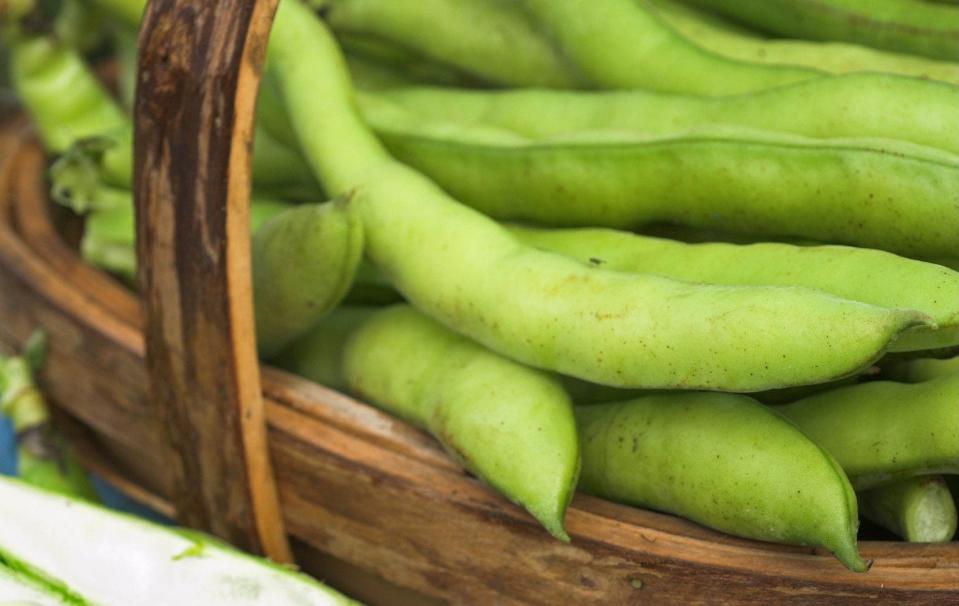Six gardening jobs to complete before the weather gets extreme

On a wet and windy day, find a dry spot and make time to sit down with a cuppa and clean your bird boxes to make sure that they’re sound and ready for next spring. Hygiene is very important for young birds as they hatch, and all of that detritus can harbour pests and disease.
The parent birds will do most of the work but it’s no bad thing to give them a helping hand. I also ensure that my boxes have a metal protector around the entrance to safeguard against predators – again, giving garden birds every chance to successfully rear young next spring. The RSPB offers guidance on their website.
Gardening jobs to do before extreme winter weather
Sow beans

Broad beans do particularly well in fertile and well-drained soil in a sunny position. ‘Aquadulce’ is one of the most popular varieties for autumn sowing, and we have two options: direct sowing or starting them off in modules or trays.
For direct sowing, make two parallel shallow furrows about 12in apart; along each row, place a couple of seeds together 2in deep and 6in apart. Cover the seeds.
Alternatively, sow seeds in a modular seed tray, two per module, and grow them on until large enough to plant out at the same spacings. If both seeds grow, cut off the weaker one at the base to allow one to flourish.
Autumn colour

There are some beautiful, colourful, seasonal plants in garden centres during the autumn. Brightly coloured cyclamen and autumn cabbages, violas, heuchera, ivies, chrysanthemums, grasses, sempervivums and ferns are all there to tempt you.
There are loads of tasks in the garden to keep us occupied at this time of year, but the majority involve clearing and cleaning – not the most exciting – so why not treat yourself to a few plants and create an autumn container or hanging basket to brighten up your front door or patio?
Think about introducing some height and ideally a plant to trail over the edge of the pot to make the most of the space. Make sure that the compost has good drainage as waterlogging can be a problem.
Tulip choice

Hurrah, it’s time to plant tulips and think about all the possibilities for our borders and containers – there is a kaleidoscope of potential colours for us to use. The risk of tulip fire is reduced by planting tulip bulbs in November and December.
In my experience, you get what you pay for in terms of tulips; cheaper is not necessarily better. A good sized, firm bulb will flower well and will often be more perennial than smaller ones.
When you buy a packet from the garden centre, make sure that the bulbs are full and firm to get the best results next year. I’m a big fan of the peony type tulips such as ‘Black Hero’, ‘Cheryl’ and ‘Princess Irene’.
Two gardening projects to plan
Leaf control
Autumn is one of the most invigorating and beautiful times in the garden, and falling leaves can be a joy on a sunny afternoon. However, smaller, more delicate plants are vulnerable to being swamped by carpets of soggy leaves.
Alpine plants such as saxifrages and herbs like thyme can die back and rot if fallen leaves are not cleared on a regular basis. Plane and sycamore are some of the worst culprits; they form a near-solid mat, which is almost impossible for weak winter light to penetrate; soggy leaves also eliminate air movement.
Fallen leaves make terrific leaf mould, which has a multitude of uses around the garden.
Air your greenhouse
Damp conditions can be a greenhouse gardener’s biggest enemy in autumn and winter. On bright, sunny days open the door and vents to dry out the atmosphere and increase air circulation. This will help to prevent fungal diseases and rot, particularly when overwintering salvias and succulents.
In autumn, I tend to keep greenhouse vents closed until mid-morning to retain any warmth, particularly in a heated house. Once we’re into late morning, I take a decision whether to lightly vent (if it’s cloudy and chilly) or, if warm and sunny, to fling open doors and vents.
Around 3pm, make sure you shut them before the sun starts to dwindle, to retain solar energy for your plants.
Tom Brown is head gardener at West Dean Gardens, West Sussex

